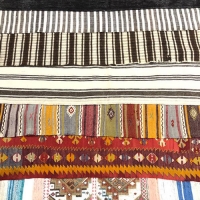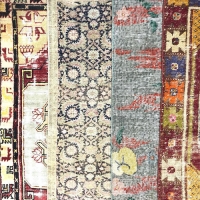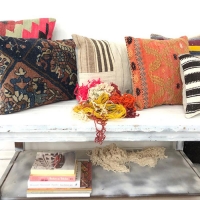
Turkish Kilims
A Turkish kilim is a traditional flat-woven rug or tapestry that is handcrafted in Turkey. Kilims have a long history and are an important part of Turkish and Anatolian culture. They are known for their vibrant colors, geometric patterns, and durability.
Kilims are woven using a technique called slit-weave, where the weft threads are tightly woven through the warp threads to create the design. This results in a flat, reversible textile with no pile. Kilims are typically made using natural materials such as wool, cotton, or a combination of both.
Turkish kilims often feature bold and intricate geometric patterns, including diamonds, triangles, stars, or stripes. These designs are often symbolic and reflect the cultural heritage of the region. The colors used in kilims are vibrant and eye-catching, with combinations of red, blue, green, yellow, and earthy tones.
Kilims serve various purposes in Turkish culture. They are used as decorative rugs, wall hangings, prayer rugs, or even as bags and saddlebags. They are appreciated for their versatility, practicality, and aesthetic appeal.
Today, Turkish kilims are highly valued and sought after worldwide. They are popular choices for adding a touch of traditional and bohemian style to interiors. Whether displayed on the floor or as wall art, Turkish kilims bring a sense of warmth, cultural richness, and unique craftsmanship to any space.



